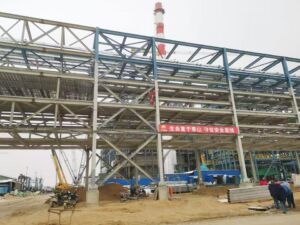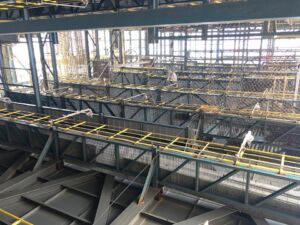Maintaining steel grating is essential for ensuring its longevity and optimal performance. Regular maintenance can prevent corrosion, زنگ, and other forms of damage, extending the lifespan of the grating. هن آرٽيڪل ۾, we will discuss the best practices for maintaining steel grating to keep it in top condition.
One of the most important aspects of maintaining steel grating is regular cleaning. Dirt, debris, and other contaminants can accumulate on the surface of the grating, leading to corrosion and deterioration. Using a mild detergent and a soft brush, scrub the grating to remove any build-up. Rinse thoroughly with clean water and allow it to dry completely before putting it back into service.

In addition to cleaning, it’s crucial to inspect the steel grating regularly for signs of wear and damage. Look for any loose or broken bars, as well as areas of rust or corrosion. Addressing these issues promptly can prevent further damage and ensure the structural integrity of the grating. Any damaged components should be repaired or replaced as soon as possible to maintain the overall effectiveness of the grating.
Another important aspect of maintenance is applying a protective coating to the steel grating. This can help prevent corrosion and extend the lifespan of the grating. There are various types of coatings available, including paint, پائوڊر ڪوٽنگ, and hot-dip galvanizing. The choice of coating will depend on the specific environmental conditions and performance requirements of the grating.
Proper drainage is also crucial for maintaining steel grating. Standing water can lead to corrosion and deterioration, so it’s important to ensure that the grating is properly sloped to allow for adequate drainage. Regularly clearing any debris or blockages from the drainage channels can help prevent water accumulation and maintain the integrity of the grating.
Regular inspections by a qualified professional can help identify any maintenance needs and ensure that the steel grating is performing as intended. These inspections can help detect any issues early on and prevent more extensive damage. اضافي طور تي, professional maintenance can help identify any potential safety hazards and ensure compliance with industry regulations and standards.

When performing maintenance on steel grating, it’s important to follow the manufacturer’s recommendations and guidelines. This can help ensure that the maintenance practices are appropriate for the specific type of grating and can help prevent voiding any warranties. اضافي طور تي, following the manufacturer’s guidelines can help optimize the performance and longevity of the grating.
نتيجي ۾, maintaining steel grating is essential for ensuring its optimal performance and longevity. By following the best practices for cleaning, inspecting, coating, and ensuring proper drainage, the lifespan of the grating can be significantly extended. Regular professional inspections and adherence to manufacturer’s guidelines are also crucial for effective maintenance.

